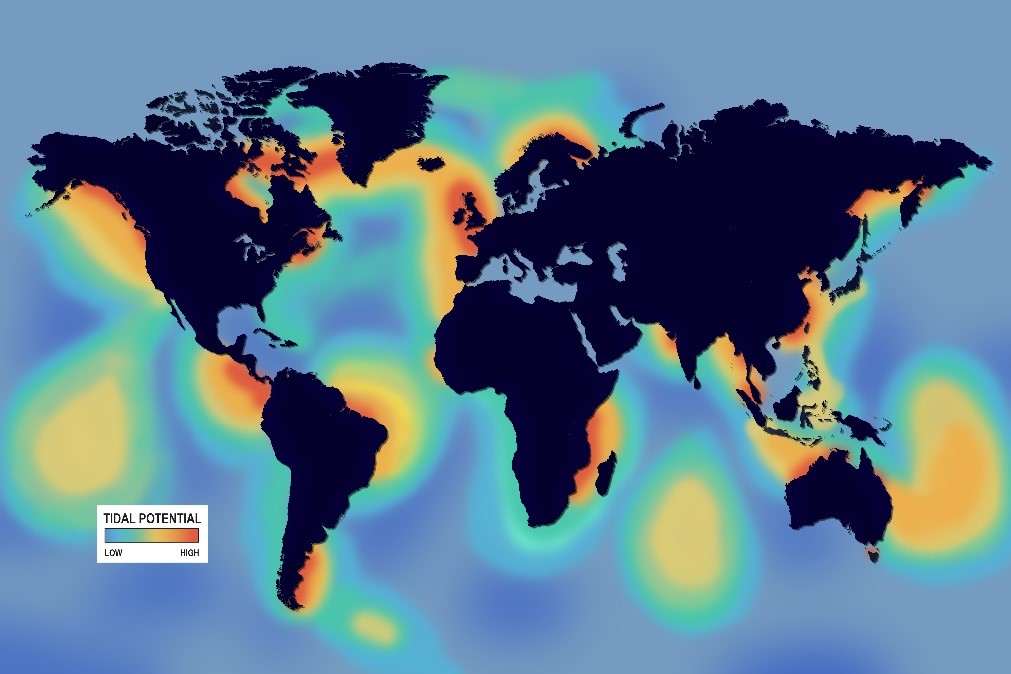
Reliability and Tidal Power
Nov 2021
My first blog looked at reliability from a distribution
network and customer perspective, this time I consider reliability in terms of
generation, network control and customer interests.
The story goes that when investment decisions were made on
which renewable energy technologies to back, that tidal generation worked out
at £350/MWh and wind generation at £200/MWh, so wind won most of the
investment.
This decision does not appear to have taken reliability
into consideration. Wind is an unreliable source of energy, as we have
discovered this year to date. Therefore to guarantee 1 MW you need to install 2
MWs at different locations and hope that when one is dormant the other is
operating. This is the same as 1 MW of reliable capacity and it has cost
£400/MWh.
If we had invested in tidal, which it utterly predictable
month after month for years in advance, then 1 MW built means 1MW available and
it cost £350, saving £50. I am dealing in installed capacities, not power
extracted from each installation, and power extracted is always smaller than
the capacity installed but this applies to all generation not just tidal.
Tidal also suits our natural load cycle the highest tides
are in the winter to suit the period of maximum demand.
No other country in the world is surrounded by tidal
generation opportunities, the UK is. This is a unique global advantage which we
should be maximising. It is like leaving your best player on the bench because
you don’t like the risk.
Tidal generation by Atlantis Energy and Nova Innovation are
working towards proving the technologies. Atlantis Energy is working on
the Pentland Firth Meygen project which has now 4 years of operational
experience in the extreme conditions of the Pentland Firth. It
has exported 24.7GWh to the national grid by the end of 2019
from 4 x 1.5MW tidal stream turbines and extended periods of uninterrupted
generation. There are plans for many more on the site.
Nova Innovation have 3 x 100kW turbines installed in the
Bluemull Sound in Shetland operational since 2017. Their production costs have
fallen by 15% with a further reduction to 40% expected by 2022.
So we have large scale and small scale examples running.
The detractors argue about the intermittency of tidal, but
that is not the point, from an operational point of view, control engineers
know in advance when it will be available and it is reliable and can
confidently include it in their generation scheduling plans.
Wind power can halve in a few minutes even when it is windy
making for very erratic power flows in the network. We should be doubling
down on tidal investment to push it over the tipping point to business as usual
generation. We should be installing large and small tidal stream
generation installations around our coasts and islands.
Reliability has either been ignored in this business case
or totally underestimated. The shortfall in rain, affecting hydropower,
and low wind speeds has cost the UK customers billions in increased energy
prices this year because we have had to buy gas to replace the missing hydro
and wind power.
Sublime to the ridiculous, my energy supplier went bust,
but I have a default supplier all seamlessly provided and working well. I
learnt this week that 1kWh of electricity which was costing me around 14p
/kWh, is now going to cost me 21p.
Lets say 25% of UKs 2.8m customers face this same dilemma,
that is 700,000 customers each using 3000 kWh on average per year costing an
extra 7p per unit = £147m.
Also, the tax payer’s money is being politically burnt on
the energy cap and it has risen from £1136 to £1277 a rise of £141. Let us
assume this is applied to 25% of UK customers, 700,000 x 141 =
£98.7m
A proper analysis of the tidal generation business case
would therefore have saved this country around £250m, which would have been
welcome indeed as an investment in tidal energy.
It is not too late, we face the same price volatility year
on year into the future. The energy cap cannot politically be scrapped, until
the cost of renewable energy, and UK energy independence, frees us from market
price variations.
As soon as we reach the situation where the cost per KWh
from all renewable sources drops, because we are past the escalation stage and
into a running cost and incremental replacement phase, then the UK will
enjoy relatively cheap energy because we do not buy wind, sun, rain or tide we
can freely use it. Then our industry product prices become internationally
competitive and we sell more and our economy grows.
Derek Macfarlane
Post Views : 149